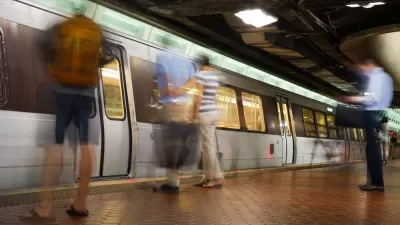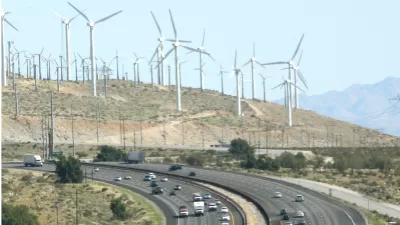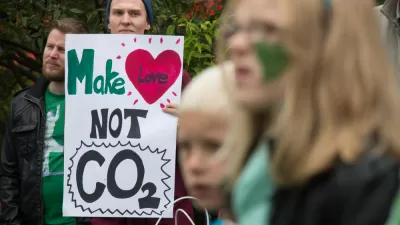The state of Colorado is still a long way from reaching its 2050 commitment, but a move to more renewable energy has the state trending in the right direction.

According to the state of Colorado, greenhouse gas emissions are down for the first time since the state started recording them. In 2005, the state legislature passed a bill that set a goal for reducing the state's emissions, and created a department to monitor emissions levels. "The legislation, House Bill 19-1261, sets the goal of reducing greenhouse gas emissions by 90 percent or more from 2005 levels — 125 million metric tons — by 2050," Judith Kohler reports for The Denver Post. Getting down to those levels is still a long way off. "Even meeting the first target of a 26 percent reduction by 2025 will be a challenge, staff officials conceded," Kohler writes.
But new sources of power have the state moving in the right direction, as the state's utilities incorporate more wind and solar energy. "The inventory shows emissions from electric power plants dropping while emissions from vehicles are projected to increase and surpass levels produced by electric utilities," Kohler reports. This pattern of growing emissions from transportation follows what has been happening around the country, where more vehicle miles (among other factors) have seen transportation outpacing energy in terms of greenhouse gas emissions.
FULL STORY: For the first time, Colorado’s greenhouse gas trending down

Maui's Vacation Rental Debate Turns Ugly
Verbal attacks, misinformation campaigns and fistfights plague a high-stakes debate to convert thousands of vacation rentals into long-term housing.

Planetizen Federal Action Tracker
A weekly monitor of how Trump’s orders and actions are impacting planners and planning in America.

In Urban Planning, AI Prompting Could be the New Design Thinking
Creativity has long been key to great urban design. What if we see AI as our new creative partner?

King County Supportive Housing Program Offers Hope for Unhoused Residents
The county is taking a ‘Housing First’ approach that prioritizes getting people into housing, then offering wraparound supportive services.

Researchers Use AI to Get Clearer Picture of US Housing
Analysts are using artificial intelligence to supercharge their research by allowing them to comb through data faster. Though these AI tools can be error prone, they save time and housing researchers are optimistic about the future.

Making Shared Micromobility More Inclusive
Cities and shared mobility system operators can do more to include people with disabilities in planning and operations, per a new report.
Urban Design for Planners 1: Software Tools
This six-course series explores essential urban design concepts using open source software and equips planners with the tools they need to participate fully in the urban design process.
Planning for Universal Design
Learn the tools for implementing Universal Design in planning regulations.
planning NEXT
Appalachian Highlands Housing Partners
Mpact (founded as Rail~Volution)
City of Camden Redevelopment Agency
City of Astoria
City of Portland
City of Laramie





























